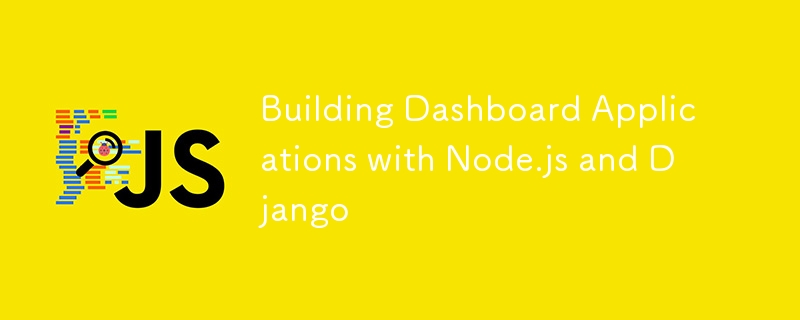
Introduction
In the past two weeks, I have delved into two prominent technologies used for building dashboard applications: Node.js and Django. This documentation aims to provide a comprehensive overview of these frameworks, highlighting their unique features, advantages, and practical applications. Node.js and Django are both robust frameworks, each catering to distinct development needs and preferences.
Node.js for Dashboard Applications
Overview
Node.js is a JavaScript runtime built on Chrome's V8 engine that allows developers to run JavaScript on the server side. It is known for its non-blocking, event-driven architecture, which makes it well-suited for real-time applications.
Key Features
- Asynchronous Processing: Node.js handles multiple requests simultaneously without waiting for each one to finish. This feature is crucial for real-time dashboards that need to display live data.
- Scalability: Node.js is designed to be scalable, allowing developers to build applications that can handle a growing number of users and data.
- NPM Ecosystem: Node.js comes with a vast library of packages through npm (Node Package Manager), which can be used to integrate various functionalities into your dashboard, such as data visualization libraries like Chart.js and D3.js.
- Express Framework: Express is a minimal and flexible Node.js web application framework that provides a robust set of features to develop web and mobile applications. It simplifies routing and handling HTTP requests, making it easier to build the backend for a dashboard.
Building a Dashboard with Node.js
To build a dashboard application using Node.js, follow these steps:
- Set Up Node.js: Install Node.js and set up a project directory.
- Create the Server: Use Express to create a server that will handle API requests and serve the dashboard.
- Integrate Data Sources: Connect to databases or external APIs to fetch data. Use libraries like Axios for HTTP requests.
- Build the Frontend: Develop the user interface using HTML, CSS, and JavaScript. Integrate data visualization libraries to display charts and graphs.
- Implement Real-Time Features: Use WebSockets or libraries like Socket.io for live data updates.
Django for Dashboard Applications
Overview
Django is a high-level Python web framework that encourages rapid development and clean, pragmatic design. It follows the "batteries-included" philosophy, providing many built-in features to help developers build robust applications quickly.
Key Features
- Built-In Admin Interface: Django comes with a powerful admin interface that allows easy management of data models, which is useful for creating and managing dashboard data.
- ORM (Object-Relational Mapping): Django's ORM allows developers to interact with the database using Python objects instead of raw SQL queries. This simplifies data management and integration.
- Security: Django provides strong security features out-of-the-box, including protection against common web vulnerabilities such as CSRF, SQL injection, and XSS.
- Templating Engine: Django’s templating engine enables developers to dynamically generate HTML pages, making it easy to create and update dashboard views.
Building a Dashboard with Django
To build a dashboard application using Django, follow these steps:
- Set Up Django: Install Django and start a new project using Django’s command-line tools.
- Define Models: Use Django’s ORM to create data models that represent the information displayed on your dashboard.
- Create Views: Develop views that process requests and return responses. Use Django’s built-in generic views to simplify common tasks.
- Design Templates: Create HTML templates for the dashboard layout and integrate dynamic content using Django’s templating language.
- Implement Data Visualization: Use libraries like Chart.js or integrate third-party packages to display data in charts and graphs.
Conclusion
Both Node.js and Django are excellent choices for building dashboard applications, each with its strengths. Node.js excels in handling real-time updates and asynchronous operations, making it ideal for interactive dashboards. Django, with its built-in features and robust security, is well-suited for applications where rapid development and strong data management are priorities. The choice between the two depends on your specific project requirements, preferred programming language, and the type of features you need.
以上是Building Dashboard Applications with Node.js and Django的详细内容。更多信息请关注PHP中文网其他相关文章!





